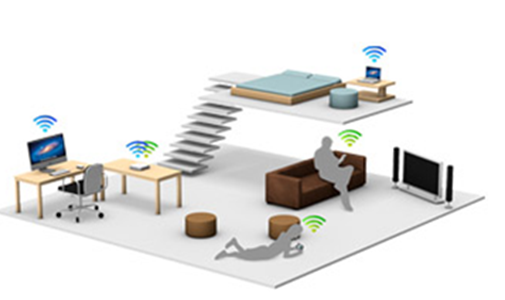Other than the Internet, multimedia is also an important trend in the computing world. The explosion of computers in households has contributed to the proliferation of multimedia. Many desktops and laptops are equipped with standard DVD drive or more improved Blu-ray drive. In addition, computers are already equipped with decent audio solutions embedded as integrated solution in most motherboards. Users no longer need to purchase dedicated sound cards to get impressive sounds, provided that they have reliable speakers. In its basic form, latest versions of Windows and Mac OS X are already equipped with good multimedia features, including integrated music and multimedia players. Many years ago, multimedia features computers are often associated with tunes of opening and closing windows.
Things started to change immensely when Windows 95 first appeared and it is a software platform that allows multiple software and hardware installed. Slowly, multimedia solutions for household uses start to evolve and become more advanced. Finally, computers started to surpass even the most advanced requirements of multimedia management. Latest computers already have 16GB of RAM, as well as powerful processors. On the other hand, MP3 files require only basic computers with only very early Pentium processor and 32MB of RAM. Hard drives also have much bigger storage capacity and faster performance. They should be able to store multiple sound and video files, many of them can be bigger than 4GB each. Modern multimedia configuration for household uses could have 2TB of storage capacity or more. It is quite clear that multimedia world has moved far beyond the MIDI and WAV files.
Windows OS offers multiple capabilities to use multimedia content, such as customizing video and audio recording, as well as managing content stored in high-end optical solutions, such as Blu-ray. When simple CD drive started to emerge as casual computer solutions, it became high-end solutions for audiophiles. There are also many solutions we could choose to enhance sound quality from simple audio CD. New operating system solutions could automatically recognize just about any optical solutions in the market, starting from lowly CD to high-capacity versions of Blu-Ray. Computer games have also brought sound capability on household computers to a new level. Today, computer sets in homes are more complicated than high-end professional standards released years previously. For today’s computers, the basic solution for multimedia management is the motherboard itself, because current models are typically equipped with integrated graphics and audio solutions.
Sound cards are now installed only for professional usages and integrated solutions can already support basic 5.1 speakers. Integrated graphics cards, especially on high-end processors could already run 3D games, although at lower screen resolutions and reduced details. Common multimedia tools for household usages may include speakers with integrated amplifier, headset, input/output for microphone. Professional-level sound cards allow us to synthesize audio tracks or create sounds app that can be an approximation to specific musical instruments. There are rhythms and sounds that music professionals can use to produce marvellous audio masterpiece.

